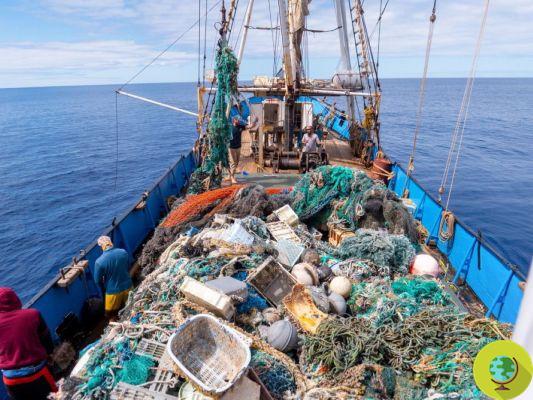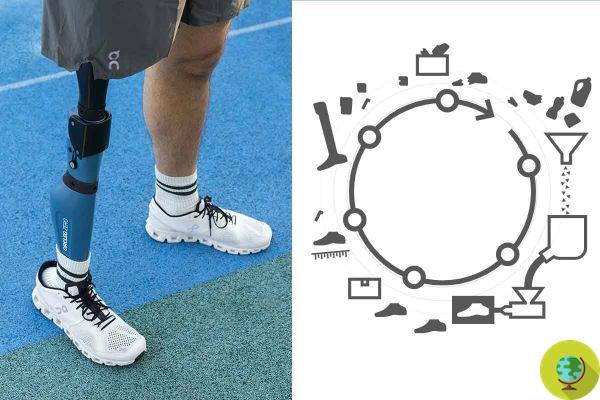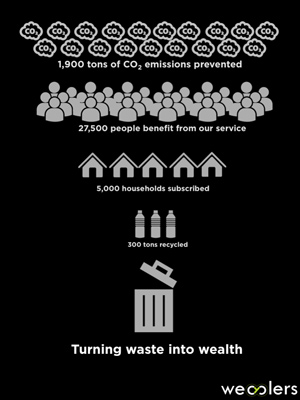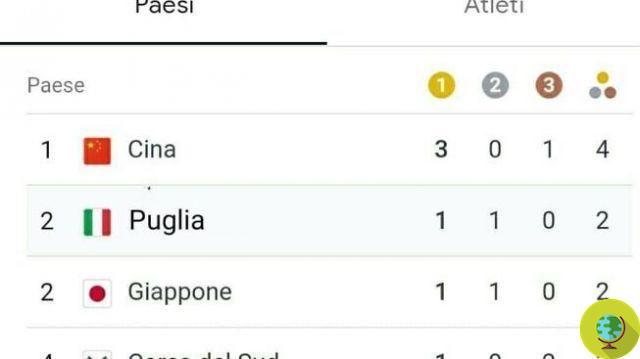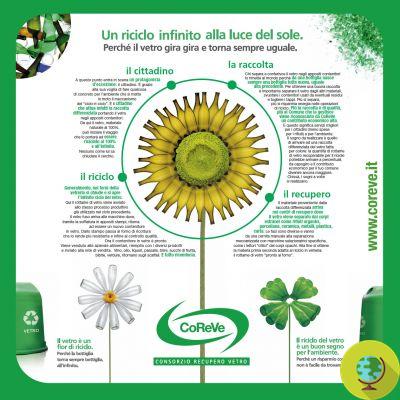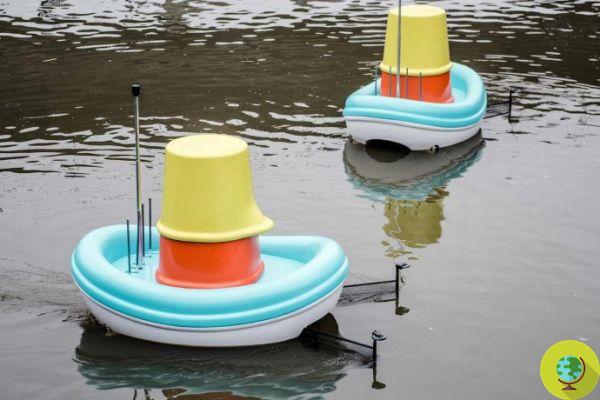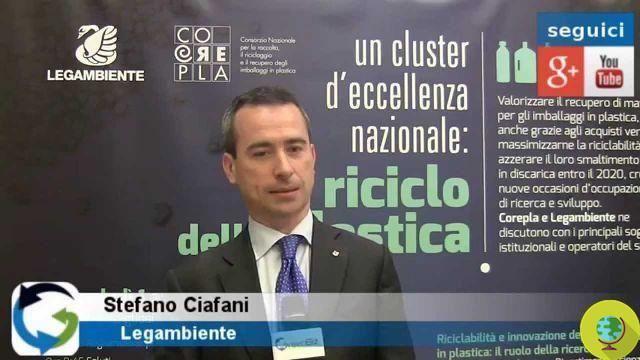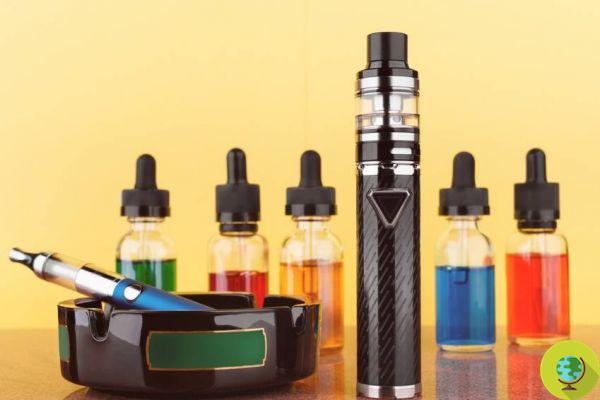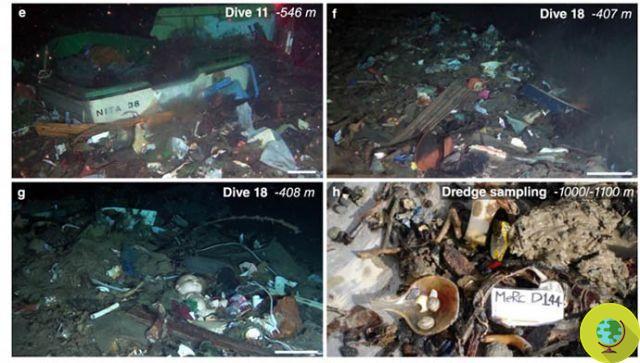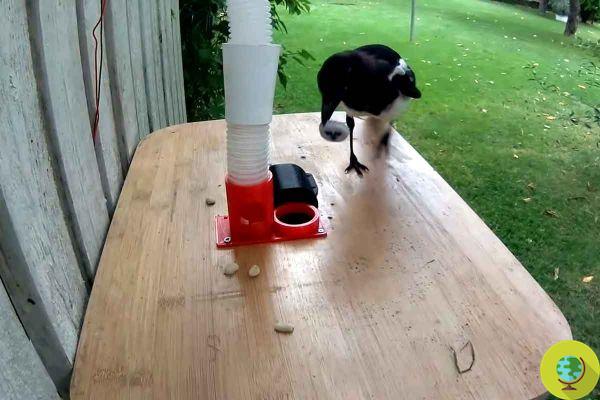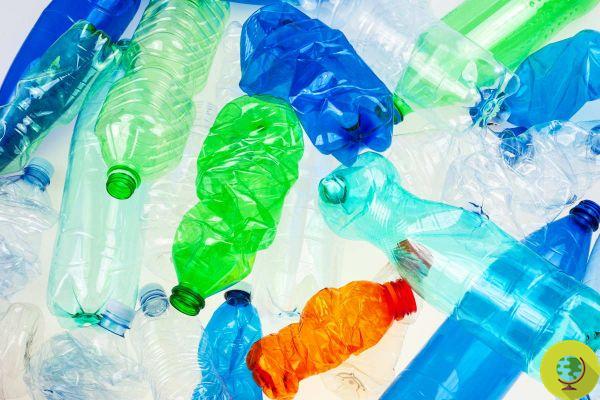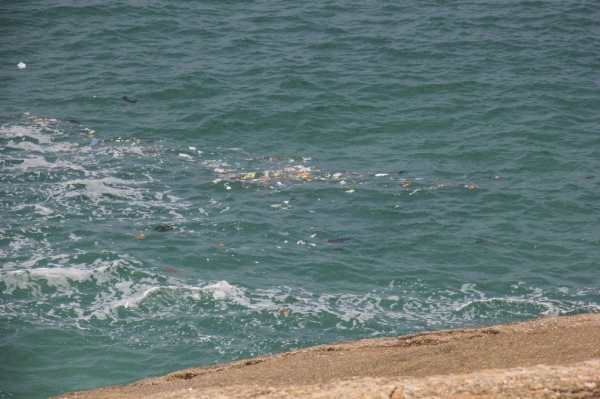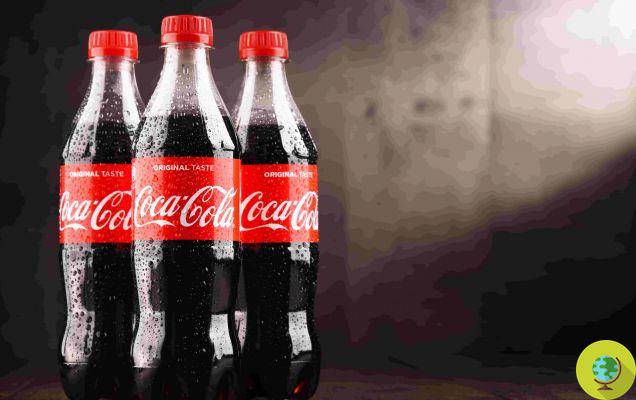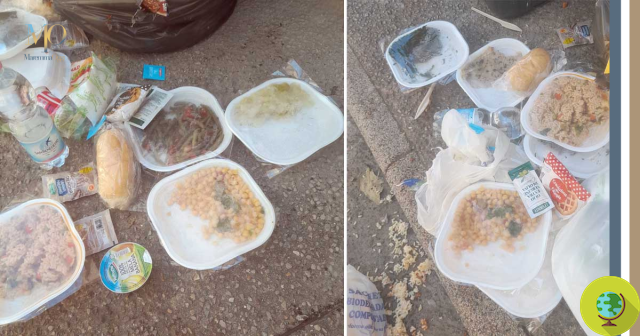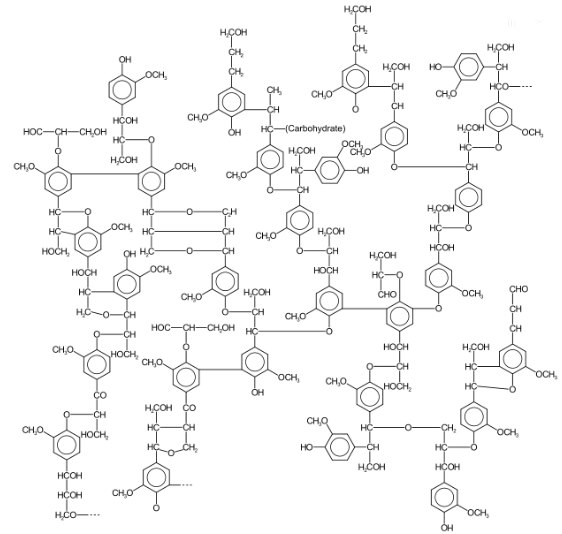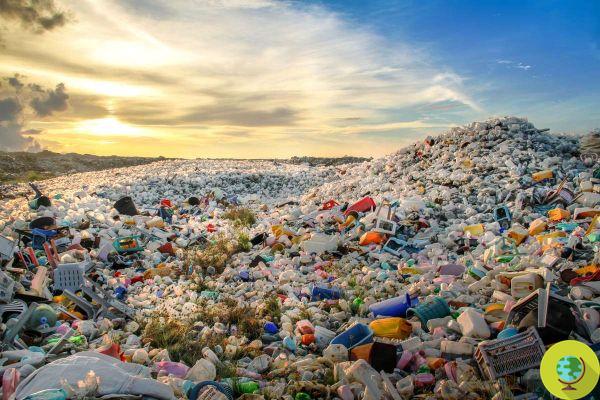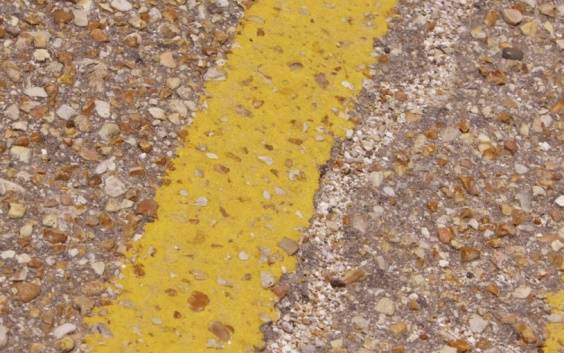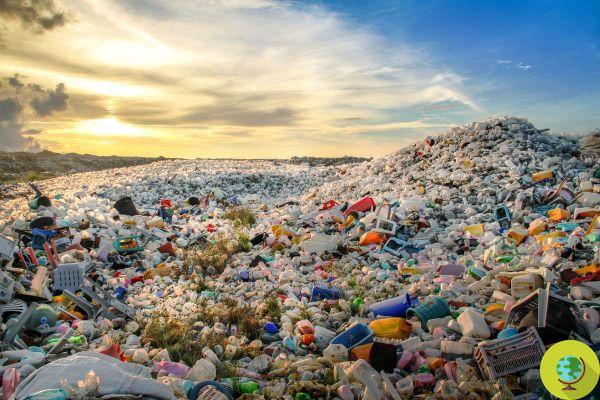
Coronavirus has destroyed the dream of recycling. A new report shows that the pandemic has sparked a rush for plastic
Reduce plastic by resorting less to disposable, prefer returnable vacuum, minimize the choice of products rich in packaging, carry out proper separate collection. The way to decrease plastic production has been drawn.
Too bad though that the coronavirus has destroyed the dream of recycling. The alarm is raised by a new report from Reuters, which offers a far from optimistic view on our future. The pandemic has in fact triggered a rush to plastic.
But not only. Since the coronavirus hit the planet, recycling activities have shrunk by more than 20% in Europe, by 50% in parts of Asia and up to 60% in some companies in the United States.
From Wuhan to New York, the demand for face shields, disposable gloves, take-out food containers and bubble wrap for online purchases has increased. Unfortunately, many of these items cannot be recycled. But not only. According to the analysis, the pandemic has intensified a price war between recycled and new plastic, produced by the oil industry. A war that recyclers around the world are losing, as shown by the data on prices and interviews carried out involving about 25 companies on five continents.
"I really see a lot of people in trouble," Steve Wong, CEO of Hong Kong-based Fukutomi Recycling and president of the China Scrap Plastics Association, told Reuters. "They don't see a light at the end of the tunnel."
The reason is unfortunately obvious: almost all plastic is a derivative of petroleum. When you consider that the economic slowdown has led to a drop in oil demand, this in turn has been reflected in the drop in the price of the new plastic. In other words, it costs less to produce new plastic, in spite of pollution, than to recycle the old one.
According to a 2017 study published in the journal Science, since 1950, the world has created 6,3 billion tons of plastic waste, 91% of which has never been recycled. Most of it is difficult to recycle, and many recyclers have long been dependent on state subsidies, which are often nonexistent or insufficient. New plastic can also cost half the price of recycled plastic.
According to the market analysts of the Independent Commodity Intelligence Services (ICIS) at the beginning of the pandemic, it also emerged that even commonly recycled waste, such as plastic bottles, has become less attractive as their cost is from 83% to 93% higher than new materials.
Imperfect timing
Unfortunately, the pandemic hit the Earth at a time when politicians in many countries had promised to wage war on single-use plastic waste. And in many cases, their promises had already translated into concrete action, starting with China, which imported more than half of the world's plastic waste, and banned most of its imports in 2018.
The European Union has also taken action on this front by banning numerous single-use plastic items. Yet, just today the EU Court of Auditors he did know that at current rates Europe will fail to achieve its objectives 50% recycling of plastic packaging by 2025 and 55% by 2030, adopted just two years ago:
“It's a very difficult challenge,” said Samo Jereb, head of the analysis. "The Covid-19 pandemic has revived disposable habits and demonstrates that plastic will continue to be a pillar of our economies, but also an increasingly serious environmental threat".
Goodbye single-use plastic. Europe officially bans plates, cutlery and straws
Plastic is closely linked to climate change
According to the World Economic Forum, an analysis conducted by the beverage industry has estimated that producing 4 plastic bottles releases the equivalent greenhouse gas emissions of driving a car for one mile. But the coronavirus has accentuated the tendency to produce more garbage.
The oil and gas industry expects to spend about $ 400 billion over the next five years on plants to produce raw materials for virgin plastics, according to a study released in September by Carbon Tracker, counting on the surge in the use of global assets. plastic-based consumption by millions of new middle-class consumers in Asia and elsewhere.
"In the coming decades, population and income growth are expected to create greater demand for plastics," ExxonMobil spokeswoman Sarah Nordin told Reuters.
And the companies?
Most of them say they share concerns about plastic waste and have promised to take action to reduce it. In theory. In practice, the investments in these efforts are a fraction of those in the production of new plastics.
To prove this, Reuters interviewed 12 of the largest oil and chemical companies globally: BASF, Chevron, Dow, Exxon, Formosa Plastics, INEOS, LG Chem, LyondellBasell, Mitsubishi Chemical, SABIC, Shell and Sinopec. Only a few have provided details on how much they are investing in waste reduction. Three declined to comment.
Many said they channeled their efforts through a group called Alliance to End Plastic Waste, backed by consumer goods companies. This alliance has promised to invest $ 1,5 billion over the next 5 years to tackle plastic pollution. Crumbs, when you consider that combined the 47 members, most of them in the plastics industry, had combined annual sales of nearly $ 2,5 trillion last year. A real contradiction.
Plans to invest so heavily in new plastics are "a rather worrying move," said Lisa Beauvilain, head of sustainability at Impax Asset Management:
“Countries with often underdeveloped recycling and waste management infrastructures will not be equipped to handle even greater volumes of plastic waste. We are literally drowning in plastic. "
Greg Janson, whose St. Louis, Missouri-based QRS recycling company has been in business for 46 years, explained that this would have been unthinkable a decade ago: the United States has become one of the cheapest places to produce virgin plastic. unfortunately.
"The pandemic has exacerbated this tsunami," he said.
A new wave of plastic is pouring onto shores around the world
A study published just recently revealed that the amount of plastic present on the surface, the one we see, is much lower than that present at the bottom of the oceans. The problem of marine pollution is therefore much more serious than assumed.
14 million tons of microplastics are (irretrievably) deposited on the ocean floor
And then there are them, the masks, partially made in part in plastic. In March, China alone used 116 million, 12 times more than in February. Total mask production in the country is expected to exceed 100 billion in 2020, according to a report by the Chinese consultancy iiMedia Research. The United States generated a full year of medical waste in two months at the height of the pandemic, according to another consultancy, Frost & Sullivan.
Coronavirus: Disposable masks and gloves are creating a new plastic pollution crisis
Plastic makes up 80% of marine debris, according to the International Union for Conservation of Nature, a global alliance backed by governments, NGOs and businesses. Plastic pollution has been shown to be deadly to turtles, whales and baby seals and releases chemicals that we inhale, ingest in the form of microplastics, including hormonal disorders and cancer, the United Nations says.
For its part, the industry claims that disposable plastics have saved lives.
"Single-use plastics have been the difference between life and death during this pandemic," Tony Radoszewski, president and CEO of the Plastic Industry Association, told Reuters. "IV bags and ventilators require single-use plastic," he said. “Gowns, gloves and hospital masks are made of safe and hygienic plastic”.
According to a study published in June by Pew Trusts, even if existing recycling commitments are met, the plastic that will end up in the oceans will increase from 11 million tons now to 29 million by 2040.
In response to growing public concerns, the Alliance to End Plastic Waste has promised it will partner with existing small-scale NGOs that clean up waste in developing countries. In the Philippines, Vietnam and India, up to 80 percent of the recycling industry was out of business during the height of the pandemic. And there has been a 50% decline in demand for recycled plastics on average in Southeast Asia.
"The combination of the impact of COVID-19 and low oil prices is like a double whammy" for plastic recycling, added Circulate CEO Rob Kaplan.
So many efforts wasted in one breath.
Sources of reference: Reuters, Court of Auditors
READ also:
- On the coasts of Chile, birds are building their nests with our plastic waste
- Plastic, multinationals delay environmental laws. The study that unmasks the hypocrisy of Coca Cola, Nestlè and Unilever
- Plastic face shields are useless against the coronavirus. The Japanese studio that rejects them
- What will the sea of Puglia be like in 2050? The docufilm that projects us into a world invaded by plastic




